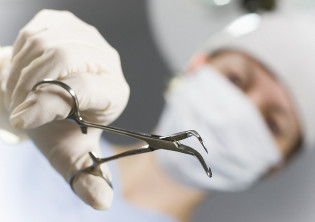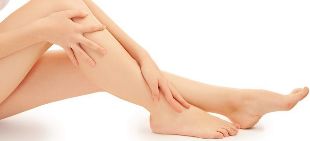All have been tried, and your surgeon informs you that you need varicose vein removal. Do not despair, because sometimes surgery really is the best way. And it should not only agree to the removal of varicose veins, but also to ask how to prepare for it and how it happens.
Varicose vein removal – debunking the myths
As with all surgery, with the removal of varicose veins we are trying to pull a little longer, do not walk, do not even think about it. But, alas, the problem is not going anywhere. Processes that change the veins is irreversible, and the longer we postpone meeting with the surgeon, the more trouble we will have to face, because the most important for varicose veins time. His to lose. Should I wait for a dysfunctional junction? What prevents us to go to the surgeon?

There is a myth that removing the veins will have a negative impact in the future on the bloodstream. This is incorrect. Removal of the saphenous veins does not prevent the normal blood flow and safe for the body, because through saphenous vein (namely their affects varicose veins) normally runs no more than 10% of the blood. 90% of venous blood is transferred to the deep and the so-called connecting veins of the legs.
Another myth says that such a surgery is poorly tolerated by the body that lost a large amount of blood and numerous cuts long time to heal, restricting our movement. But it's not. Progress far ahead, and running instances will not get even the tenth share of such terrible suffering. Moreover, in recent years, widespread method of seamless varicose vein removal – removal without incisions, through punctures of the skin. Such intervention is particularly useful in the early stages of varicose veins.
So, if there are indications for surgery should not delay its implementation, because the sooner it is undertaken the sooner will come the normalization of blood flow and treatment for other disorders and complications of varicose veins.
Varicose vein removal – indications and contraindications
There are several indications for surgery to remove varicose veins:
- if extensive varicose veins:
- if saphenous vein pathologically expanded;
- if varicose saphenous veins is accompanied by increased fatigue and leg swelling;
- if in the face of signs of violation of the outflow of blood — a feeling of heaviness, swelling, fatigue of the legs;
- varicose veins accompanied by trophic ulcers;
- in acute thrombophlebitis of varicose veins.
However, indications for surgery, there are contraindications. So, operations are not conducted:
- at a late stage of varicose veins
- for hypertension
- in ischemic heart disease
- in severe infectious processes
- elderly patients
- inflammation on legs, eczema, pyoderma, erysipelas, etc.
- do not conduct operations during pregnancy.
It is also important to remember that during surgery can be used various drugs, and if you have intolerance or are allergic to any medications, especially Novocain, and iodine-containing substances if you are taking any medications, be sure to inform your surgeon.
Varicose vein removal - what is the procedure and what to do after?
Preparing for surgery to remove veins completely simple

- Take a shower,
- Completely shave the leg where the surgery will be performed,
- Before the surgery, the skin needs to be healthy and to be free of any pustular diseases
- If the operation is planned to do under General anesthesia before the operation prescribe a mandatory enema
- The surgery come in spacious footwear and clothing.
Surgery to remove varicose veins is about 2 hours. As a result of surgical intervention, patients veins are removed. Marks on the skin after an operation to remove the varicose veins are almost invisible – only 3-5 mm. During surgery for varicose veins is used in anesthesia. In case of detection of improperly functioning valves of the veins, performed correction insolvent valves to restore normal blood flow.
After vein surgery is required to follow some recommendations, most of which elastic compression. After surgery, the patient is recommended around the clock for 1.5—2 months to use elastic bandage or elastic stockings. Additionally, to restore the function of the operated legs prescribed venotonic drugs.
Also from the first hours after surgery is recommended to turn, bend legs, etc. But simply lifting the end of the bed by 8-10 cm greatly improves venous blood flow. The next day after surgery for varicose veins is ligation with the use of compression hosiery or elastic bandages on both legs from the toes to the knee. Allowed to go only after ligation. After removal of veins recommended physical therapy and light massage as prevention of thrombosis. About two weeks you should not do aerobics, gymnastics or spinning classes, as well as sauna and bath. Elastic compression is necessary has not less than 2 months after his release from the seams.




































